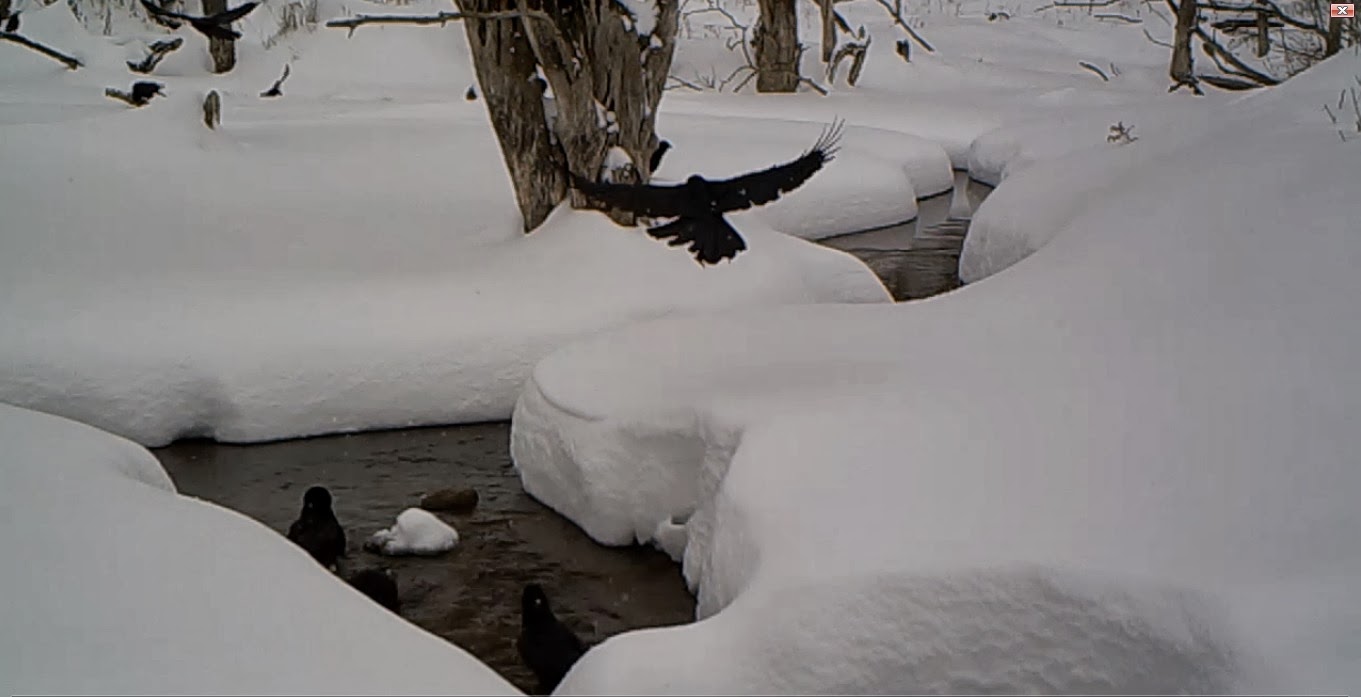 |
| American Crows gather at an open stream to bathe |
 |
| Crows gather at the site of a deer carcass - there's little left of it now |
 |
| Crows flying in and landing around the scant remains |
 |
| Always wary, crows are quick to depart whenever one of them senses danger |
 |
| An adult Red-tailed Hawk comes in to try and get a beak full of the shrinking carcass |
 |
| At night, a single Coyote continues to visit the site, but now there's little left |
 |
| The Coyote excavates around the site - trying to find some overlooked morsels |
 |
| A deer walks through moderately deep snow with little trouble |
 |
| A thick winter coat enables deer to put up with extremely cold temperatures |
 |
| harbingers of spring - The furry buds of Pussy Willow blooms have started showing |
 |
| Under the ice for a long time now - this 2-year old beavers has never seen a winter like this one |
 |
| Beavers appreciate a care package of apples and poplar branches |
 |
| A male Cardinal with a broken bill picks out a shelled peanut |
 |
| The Cardinal with the broken bill holds a shelled sunflower seed |
 |
| A Pair of Hairy Woodpeckers at the Bird Feeder area |

No comments:
Post a Comment